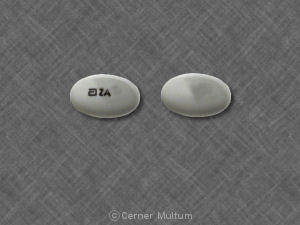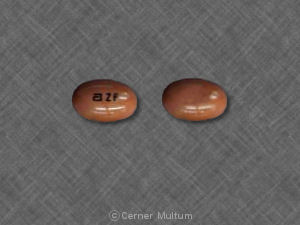What is the most important information I should know about paricalcitol?
You should not use paricalcitol if you have high levels of calcium or vitamin D in your blood.
What is paricalcitol?
Paricalcitol is a man-made form of vitamin D. Vitamin D is important for the absorption of calcium from the stomach and for the functioning of calcium in the body.
Paricalcitol is used to treat or prevent overactive parathyroid gland (hyperparathyroidism) in people with chronic kidney failure.
Paricalcitol may also be used for purposes not listed in this medication guide.
What should I discuss with my healthcare provider before taking paricalcitol?
You should not use this medicine if you have ever had an allergic reaction to vitamin D, or if you have:
- high levels of calcium in your blood (hypercalcemia); or
- high levels of vitamin D in your body (vitamin D toxicity).
To make sure paricalcitol is safe for you, tell your doctor if you have:
- high blood pressure;
- liver disease; or
- an electrolyte imbalance (such as low levels of potassium or magnesium in your blood).
It is not known whether this medicine will harm an unborn baby. Tell your doctor if you are pregnant or plan to become pregnant.
It is not known whether paricalcitol passes into breast milk or if it could harm a nursing baby. You should not breast-feed while using this medicine.
Paricalcitol is not approved for use by anyone younger than 10 years old.
How should I take paricalcitol?
Follow all directions on your prescription label. Your doctor may occasionally change your dose. Do not use this medicine in larger or smaller amounts or for longer than recommended.
Paricalcitol is sometimes taken daily, and sometimes taken every other day or 3 times per week. Follow your doctor's instructions carefully.
You may take this medication with or without food.
Paricalcitol may be only part of a complete program of treatment that also includes a special diet. Follow the diet plan created for you by your doctor or nutrition counselor. Get familiar with the list of foods you must avoid to help control your condition.
While using paricalcitol, you may need frequent blood tests.
Store at room temperature away from moisture, light, and heat.
What happens if I miss a dose?
Take the missed dose as soon as you remember. Skip the missed dose if it is almost time for your next scheduled dose. Do not take extra medicine to make up the missed dose.
What happens if I overdose?
Seek emergency medical attention or call the Poison Help line at 1-800-222-1222. An overdose of vitamin D can cause serious or life-threatening side effects.
Overdose symptoms may include headache, weakness, drowsiness, dry mouth, nausea, vomiting, constipation, muscle or bone pain, metallic taste in the mouth, weight loss, itchy skin, changes in heart rate, loss of interest in sex, confusion, unusual thoughts or behavior, feeling unusually hot, severe pain in your upper stomach spreading to your back, or fainting.
What should I avoid while taking paricalcitol?
Do not take other vitamin or mineral supplements (including mineral oil), unless your doctor has told you to.
If you also take mineral oil or cholestyramine: Avoid taking either of these medicines within 1 hour after or 4 to 6 hours before you take paricalcitol.
Grapefruit and grapefruit juice may interact with paricalcitol and lead to unwanted side effects. Avoid the use of grapefruit products while taking paricalcitol.
Avoid using calcium supplements or antacids without your doctor's advice. Use only the specific type of supplement or antacid your doctor recommends.
What are the possible side effects of paricalcitol?
Get emergency medical help if you have any of these signs of an allergic reaction: hives; difficulty breathing; swelling of your face, lips, tongue, or throat.
Stop using paricalcitol and call your doctor at once if you have:
- fever, chills, body aches, flu symptoms;
- pain or burning when you urinate;
-
early signs of vitamin D overdose --weakness, metallic taste in your mouth, weight loss, muscle or bone pain, constipation, nausea, and vomiting; or
-
signs of too much calcium in the blood --nausea, vomiting, loss of appetite, weight loss, constipation, increased thirst or urination, confusion, and feeling tired or restless.
Common side effects may include:
- nausea, vomiting, diarrhea;
- sinus pain, sore throat;
- dizziness; or
-
increased blood pressure --severe headache, blurred vision, pounding in your neck or ears, anxiety.
This is not a complete list of side effects and others may occur. Call your doctor for medical advice about side effects. You may report side effects to FDA at 1-800-FDA-1088.
What other drugs will affect paricalcitol?
Tell your doctor about all your current medicines and any you start or stop using, especially:
- conivaptan;
- digoxin (digitalis);
- nefazodone;
-
an antibiotic --clarithromycin, telithromycin;
-
antifungal medicine --itraconazole, ketoconazole, posaconazole, voriconazole; or
-
antiviral medicine to treat hepatitis C or HIV/AIDS --atazanavir, boceprevir, cobicistat, delavirdine, fosamprenavir, indinavir, lopinavir, nelfinavir, ritonavir, saquinavir, telaprevir.
This list is not complete. Other drugs may interact with paricalcitol, including prescription and over-the-counter medicines, vitamins, and herbal products. Not all possible interactions are listed in this medication guide.
Where can I get more information?
Your pharmacist can provide more information about paricalcitol.
Remember, keep this and all other medicines out of the reach of children, never share your medicines with others, and use this medication only for the indication prescribed.
Every effort has been made to ensure that the information provided by Cerner Multum, Inc. ('Multum') is accurate, up-to-date, and complete, but no guarantee is made to that effect. Drug information contained herein may be time sensitive. Multum information has been compiled for use by healthcare practitioners and consumers in the United States and therefore Multum does not warrant that uses outside of the United States are appropriate, unless specifically indicated otherwise. Multum's drug information does not endorse drugs, diagnose patients or recommend therapy. Multum's drug information is an informational resource designed to assist licensed healthcare practitioners in caring for their patients and/or to serve consumers viewing this service as a supplement to, and not a substitute for, the expertise, skill, knowledge and judgment of healthcare practitioners. The absence of a warning for a given drug or drug combination in no way should be construed to indicate that the drug or drug combination is safe, effective or appropriate for any given patient. Multum does not assume any responsibility for any aspect of healthcare administered with the aid of information Multum provides. The information contained herein is not intended to cover all possible uses, directions, precautions, warnings, drug interactions, allergic reactions, or adverse effects. If you have questions about the drugs you are taking, check with your doctor, nurse or pharmacist.
Copyright 1996-2018 Cerner Multum, Inc. Version: 5.01. Revision date: 1/17/2017.


